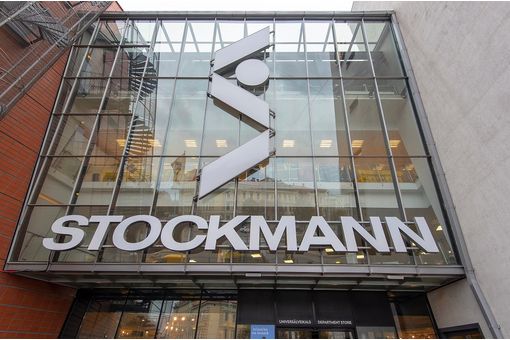Interviews
No silver lining on horizon for textile & garment sectors
30 Apr '11
4 min read
The annual media conference of the Swiss Textile Federation was held on April 29, 2011 in the Papiersaal room at Sihlcity. Federation Chairman Max R. Hungerbühler, reviewed the performance and prospects of the Swiss textile and garments industry.
The economic recovery of the Swiss textile and garments industry again failed to materialize in 2010. Prospects for the year 2010 are also anything but assured. The upturn in the Swiss textile and garments industry which we had hoped to see in 2010 is getting off to a sluggish start. The decline in trade was reflected in value added figures throughout the branch. At CHF 1.14 billion, they were 1.6% down on the previous year's result.
Max R. Hungerbühler, Chairman of the Swiss Textile Federation, still sees no silver lining on the horizon for the Swiss textile and garments industry in 2011. Textile exports admittedly continued to grow in the 4th quarter of 2010 and the downward trend of garment exports also slowed towards the end of 2010. However, in view of the sustained strength of the Swiss franc, the uncertainty caused by political turbulence in the Near East and the natural and nuclear disasters in Japan, the outlook is anything but rosy.
Trends in the textile and garments sectors differ
Value added in the branch fell overall by 1.6% to CHF 1.14 billion, but the situation for textiles differs from that in the garments sector: value added in the textile industry rose by 1.9% or CHF 870 million, while the equivalent figure for the garments industry was 10.2% down at CHF 270 million. The situation for exports is similar with an overall decline by 7.5% to CHF 3.15 billion: while textile exports gained 4.1% to CHF 1.67 billion, garment exports declined by 17.8% to CHF 1.48 billion.
Imports were 1.4% lower at a total figure of CHF 7.68 billion. Textile imports gained 3.8% to CHF 2.15 billion but garment imports for their part fell 3.4% to CHF 5.53 billion. On the textiles side, imports from China gained nearly 22%. In the garments sector, imports from Italy fell by around 20%, while those from Germany and China remained flat. However, the EU remained the most important source of imports. In this environment, the number of employees was down by 2.8% at around 14 000 persons.
New opportunities in the emerging countries
Against a background of increasing global uncertainty, the Swiss franc will continue to strengthen. This is anything but conducive to a positive development of the Swiss textile and garments industry. The economic recovery in Europe is being accompanied by rising pressure on prices. However, ongoing economic growth in Germany does hold out hopes of rising demand. New market outlets may well also open with the expansion of the emerging countries.
Topical political issues
Max R. Hungerbühler considers the clear formulation of concerns, needs and proposals as one of the key tasks of the Swiss Textile Federation. He sees a need to fight excessive regulation and administrative work at both international and national level; they are making life harder for companies. In external economic policy, the security of raw material supplies is becoming increasingly difficult to assure; the expansion of a properly functioning EUROMED zone must also be driven forward.
The economic recovery of the Swiss textile and garments industry again failed to materialize in 2010. Prospects for the year 2010 are also anything but assured. The upturn in the Swiss textile and garments industry which we had hoped to see in 2010 is getting off to a sluggish start. The decline in trade was reflected in value added figures throughout the branch. At CHF 1.14 billion, they were 1.6% down on the previous year's result.
Max R. Hungerbühler, Chairman of the Swiss Textile Federation, still sees no silver lining on the horizon for the Swiss textile and garments industry in 2011. Textile exports admittedly continued to grow in the 4th quarter of 2010 and the downward trend of garment exports also slowed towards the end of 2010. However, in view of the sustained strength of the Swiss franc, the uncertainty caused by political turbulence in the Near East and the natural and nuclear disasters in Japan, the outlook is anything but rosy.
Trends in the textile and garments sectors differ
Value added in the branch fell overall by 1.6% to CHF 1.14 billion, but the situation for textiles differs from that in the garments sector: value added in the textile industry rose by 1.9% or CHF 870 million, while the equivalent figure for the garments industry was 10.2% down at CHF 270 million. The situation for exports is similar with an overall decline by 7.5% to CHF 3.15 billion: while textile exports gained 4.1% to CHF 1.67 billion, garment exports declined by 17.8% to CHF 1.48 billion.
Imports were 1.4% lower at a total figure of CHF 7.68 billion. Textile imports gained 3.8% to CHF 2.15 billion but garment imports for their part fell 3.4% to CHF 5.53 billion. On the textiles side, imports from China gained nearly 22%. In the garments sector, imports from Italy fell by around 20%, while those from Germany and China remained flat. However, the EU remained the most important source of imports. In this environment, the number of employees was down by 2.8% at around 14 000 persons.
New opportunities in the emerging countries
Against a background of increasing global uncertainty, the Swiss franc will continue to strengthen. This is anything but conducive to a positive development of the Swiss textile and garments industry. The economic recovery in Europe is being accompanied by rising pressure on prices. However, ongoing economic growth in Germany does hold out hopes of rising demand. New market outlets may well also open with the expansion of the emerging countries.
Topical political issues
Max R. Hungerbühler considers the clear formulation of concerns, needs and proposals as one of the key tasks of the Swiss Textile Federation. He sees a need to fight excessive regulation and administrative work at both international and national level; they are making life harder for companies. In external economic policy, the security of raw material supplies is becoming increasingly difficult to assure; the expansion of a properly functioning EUROMED zone must also be driven forward.
Popular News
Leave your Comments
Editor’s Pick
































-Ltd..jpg?tr=w-120,h-60,c-at_max,cm-pad_resize,bg-ffffff)





.jpg?tr=w-120,h-60,c-at_max,cm-pad_resize,bg-ffffff)
.jpg?tr=w-120,h-60,c-at_max,cm-pad_resize,bg-ffffff)






